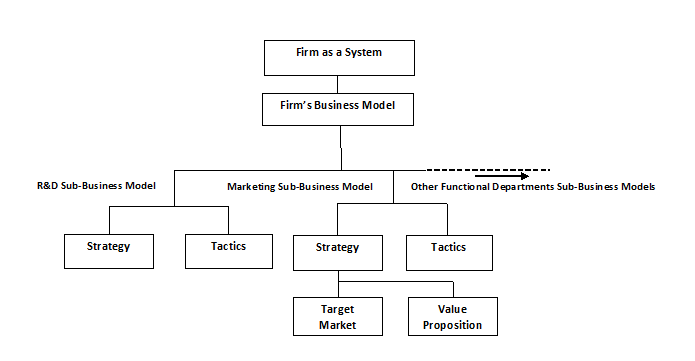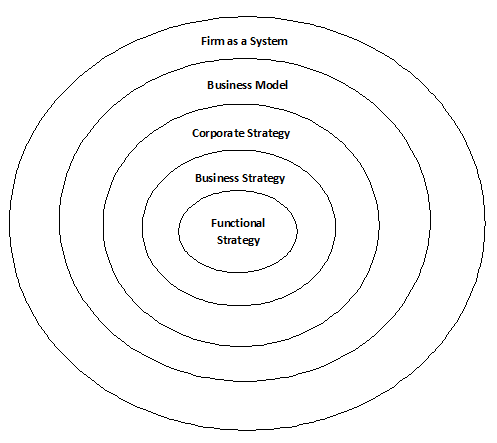A New Business Model Structure, Innovation Strategy, and Competitive Advantage
Why do companies engage in innovation? The main reason for this is companies in search of competitive advantage cause them to invest in innovation. However, the answer to this question also depends on how these companies are strategically oriented. Not all strategic types of firms engage in innovation, but there are two general types known as prospectors and analyzers who emphasize innovation and desire to create value and hence generate competitive advantage through innovation. Innovation forms a link between product innovation strategy and competitive advantage, and a robust business model coupled with the innovation strategy can help to achieve a competitive advantage. Developing a business model alone is not sufficient to generate a competitive advantage. The purpose of this article is to briefly show that in technology-based industries how business models and strategy are closely correlated (through a hierarchy) and linked to innovation that drives competitive advantage.
Innovation Strategy
A firm’s product innovation and technology strategy is a subset of its business strategy, and therefore, it should support the business strategy and align with it. Innovation by itself is a broad concept, a management process, and incorporates many activities, such as focus and idea generation, technology development, manufacturing, and marketing. Its major function is the commercialization of the invention and its applications to create new products and services to create utility and value for all the stakeholders of the firm. It includes the product, process, and business model innovation in the areas described above, and addresses integration aspects of all innovation activities.
Business Models
The definitions of business strategy and business model are the same, and both equally focus on creating, delivering, and capturing value. A business model by definition shows the logic or architecture of value creation. It is an abstract representation of things, including strategy and processes, and does not exist physically. The definition and subject of business strategy are well defined, but the definition and purpose of the business model and its proper position in the hierarchy of strategy still remain fuzzy, because it has not been explicitly defined so far.

Figure 1 Conceptual Model-Showing Business Model Hierarchy for Value Creation and Capture
From the above discussion, we see that both business strategy and business models are closely correlated, but both are different, and perceiving the difference has been very confusing so far. To find a solution to this problem, I apply the concepts and principles of the “conceptual model” to describe how a business model forms a link between a system and strategy. In this respect, a business organization can be considered as a system. And a system can be represented by a conceptual model (or model). Thus, a model is a subset of a system, both are closely correlated, and a model can be further disaggregated into a single or multiple sub-models (See Figure 1). Therefore, based on these facts, a business is a system of interacting functions (including sub-models and activities), forming an integrated whole. The term “model” with respect to a business model represents processes of value creation and capture logically. A business model structurally can further be disaggregated into two important components: strategy and tactics.
Marketing Sub-business Model for Innovation
Innovation by itself or in isolation has no commercial meaning. It becomes important only when it creates utility and value for all the stakeholders of the firm. To innovate successfully, a firm should be able to produce and market a product successfully. For this reason, new product development (or R&D) and marketing become the two most crucial functions of the business to create, deliver and capture value. From the marketing viewpoint, the role of the business model is indispensable in creating market value for the innovated product. The core of marketing is in the business model. A sub-business model for the marketing function as shown in figure 1 defines the architecture of value creation, and in delivering and capturing value through marketing activities. A business model can be narrow or broad in scope. Narrow business models generally involve marketing tactics that are narrower in scope and cover a shorter time frame than marketing strategies. Marketing tactics involve activities such as pricing, branding, promotion, and distribution to create market value. For example, the razors-and-blades model, also known as the revenue model, represents a pricing tactic that involves pricing razors at a low price to facilitate the sales of razor blades (the complementary part) to capture the required markup. The Freemium model represents a promotional tactic that involves providing an offering (typically a software or internet-related service) initially with basic features and functions free of charge and then encouraging customers to upgrade to a paid version. Narrow business models focus on only one aspect of the value creation process, while broader business models focus on all aspects of the value creation process.
The R&D Sub-business Model
A firm’s R&D strategy is a subset of its innovation strategy, which deals with technology development (or acquisition), product and process innovation, and modification and improvement. Its primary function is to achieve a low cost, differentiation, or both to gain competitive advantage, and support and align with the firm’s innovation and business strategy.
The R&D function (fig.1) can be represented by a functional or sub-business model and disaggregated into R&D strategy and R&D tactics. The R&D strategy focuses on creating value through product design and development activities- to achieve low cost, differentiation, or both to gain competitive advantage. A tactic, in contrast, focuses on the competitive aspects of business strategy in terms of “when to compete” and “where to compete,” but confines its activities only related to R&D. For example, late movers use “when to compete” tactics to copy designs of first movers and thus gain competitive advantage by reducing costs, increasing quality, and reducing market entry risk by waiting to enter the market until the first mover’s products market is well established. Apple was a late mover for its iPod and smartphone products.

Figure 2. Hierarchy of Business Model and Strategy
The Distinction between business model and Strategy
The R&D function’s sub-business model outlines the product architecture or conceptual block diagram (not shown) of a product that creates value or the value that is built into the product. This R&D sub-business model is an abstract representation of the way in which the firm will create value, but in isolation (to strategy), it cannot provide any estimation of the product cost or define any competitive aspects of the product. A model helps to focus on the subject and provides direction to the strategy. The innovation strategy is built into the model by applying the tools of strategic analysis to the architecture to achieve a low cost, differentiation, or both to gain a competitive advantage. For example, there are many generic architectures available to design different radios (transmitter and receiver), out of which many of them are standard designs or dominant designs. The design of radios begins with first selecting an appropriate generic architecture and then by analyzing, modifying (option), and simulating it in light of technical performance and strategic requirements like low cost, differentiation, or both-the design are then approved for prototyping. Based on these two closely related steps and the other inputs from marketing, the designer can estimate the product cost and the potential for value creation. From the above discussion, we can see that strategy and business model are distinct but are closely related, and strategy is a subset of a business model in the “hierarchy of business-model and strategy” as shown in figure 2.
Based on the concepts of innovation strategy and R&D sub-business model as described above we (the team at Recoton Corp.) designed and developed (teamwork) a 900 MHz low power (FCC part 15) radio transmitter and receiver (Radio) over two decades ago. The radios were manufactured in high volume by Recoton Corporation and sold, including to RCA/Thompson Consumer Electronics and in the U.S. capturing above-average returns. A new design architecture or new (R&D sub-business model) for the design emerged because there was a necessity to create a new design to solve a specific problem. The new architecture was designed by making changes to a typical architecture to meet the customers’ needs. This example is an example of a typical technological innovation that occurred at the component level and only involved a slight change to the overall typical architecture.
Competitive Advantage
The business model definition as described above has two key phases when evaluating it from the competitive advantage perspective: (1) The value creation phase-assigned to product management and (2) communicating, delivering, and capturing value assigned to marketing. In technology-intensive organizations, the R&D function becomes the primary source of competitive advantage because here R&D costs are generated, and value is created for the customers. Marketing, on the other hand, generates lower costs than R&D, and also creates lesser value than R&D for customers, and therefore, becomes the secondary source of competitive advantage. Additionally, the marketing sub-business models are more general because they operate on the operational side of the business and therefore are easily imitated. A business model in itself cannot create any advantage, but when combined with innovation and business strategy (for example, in new products), it can create an enormous amount of value and sustainable competitive advantage. Generally, in technology-intensive industries, new business models for new products emerge out of necessity that create breakthrough innovations.
References and Further Reading
- R. M. Grant, Contemporary Strategy Analysis (United Kingdom: John Wiley & Sons, Ltd., 2013), Chapters 2, 7, 8, and 9.
- Paul Trott, Innovation Management and New Product Development (United Kingdom: Pearson Education Ltd., 2017), Chapters 1 and 12.
- T. L. Wheelen & J. D. Hunger, Strategic Management & Business Policy (NJ: Prentice Hall, 2000), Chapters 1 and 5.
- A. Chernev, Strategic marketing Management (USA: Cerebellum Press, 2014), Chapter 2.
- Johnson, Mark w., Clayton M. Christensen, and Henning Kagermann, Reinventing Your Business Model, Harvard Business Review, December 2008.
- Wikipedia, Conceptual model.
- David J. Teece, Business Models, Business Strategy and Innovation, Long Range Planning, vol. 43, 172-194.
- Robert G. Cooper and Scott J. Edgett, Product Innovation and Technology Strategy (USA: Product Development Institute Inc., 2009), Chapter 3.

Comments
Want to join the discussion?Feel free to contribute!